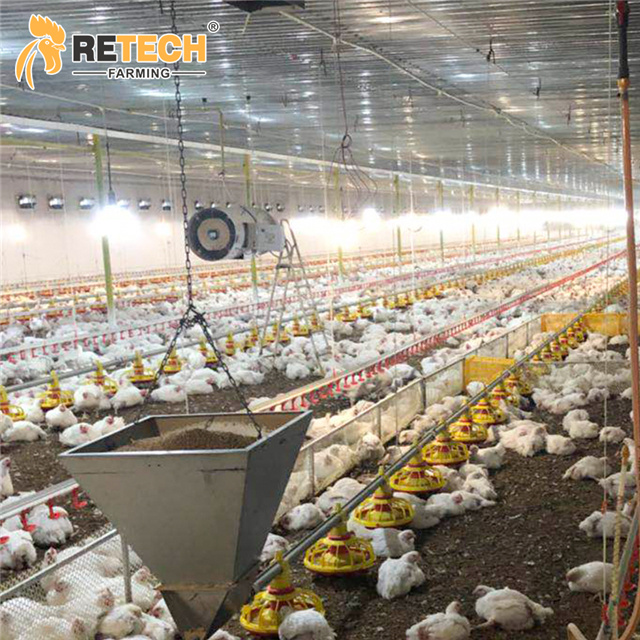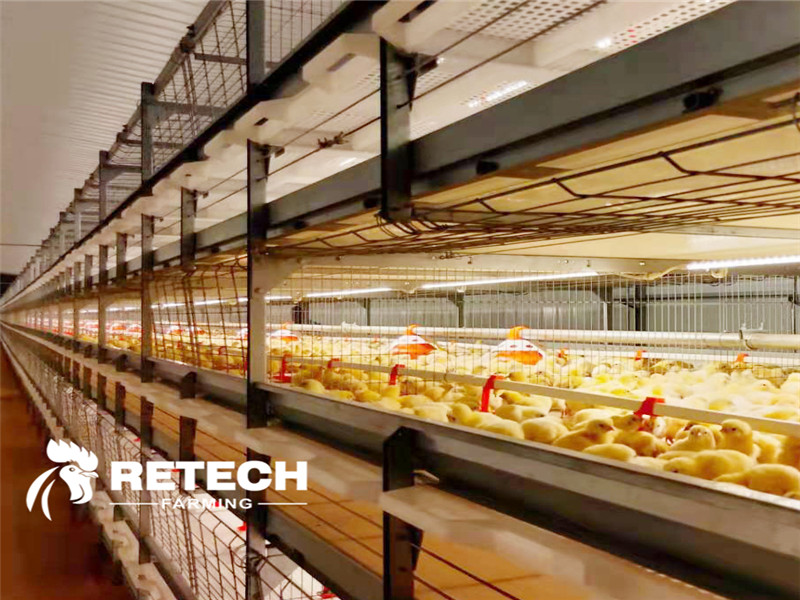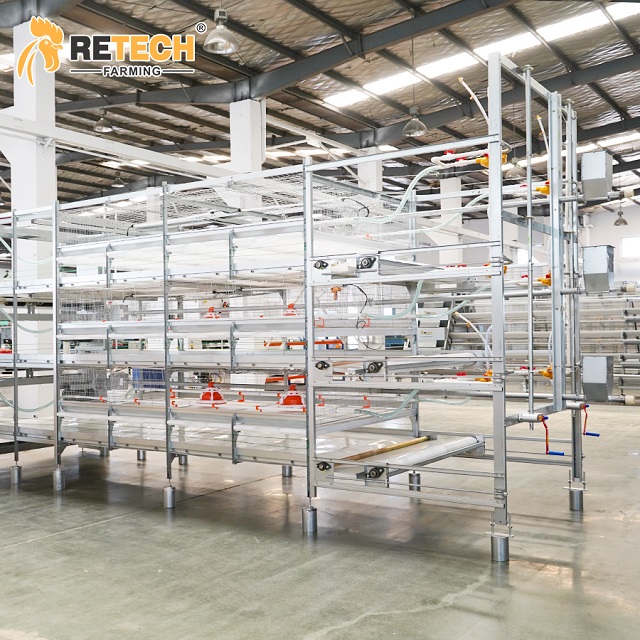The management of broiler chicks is divided into three periods: before, during and after. In order to do a good job in the management of broiler chicks, it is necessary to understand and master the physiological characteristics of chicks and provide suitable environmental sanitation conditions. Heat conditions for brooding are critical in these management conditions.
1.Stocking density
Broiler chicks are suitable for high-density feeding, but how high the density is, the reasonable feeding density should be determined according to the specific conditions such as the structure of the chicken house and ventilation conditions.
For example, the density can be higher in good ventilation conditions, lower in poor ventilation conditions, higher in cold seasons, and lower in warm seasons.
The stocking density in the early stage cannot be calculated by body weight. When entering the chicks, 30-50 chicks can be raised per square meter, and then gradually evacuated and adjusted.

broiler raising
2.Food trough
The position of the trough must be sufficient to ensure that each chicken can fully eat. Generally, in the first week, every 100 chicks should be equipped with 1 to 2 flat-bottomed feeding pans (1 large pan and 2 small pans). In the future, the trough will be used instead, requiring each chicken to occupy a position of 5 cm. If a feeding bucket is used, there will be one feeding bucket for every 50 chickens. For large chickens, generally one feeding bucket will be used for every 20 to 40 chickens.

broiler poultry farm
3.Drinking Fountain
The drinking position is under the premise of continuous water, and there is one drinking fountain (capacity of 4 kg) for every 70 chicks in the first 2 weeks. When changing to the water tank in the future, each chicken occupies a drinking position of 2 cm. If a round bell type automatic waterer is used, each waterer can be used by 120 chickens.
During production, different types of drinking fountains should be replaced in time according to the age of the chicks, and small drinking fountains should be used for brooding. The number of automatic drinking fountains should be sufficient, and the layout should be uniform. The distance between drinking fountains should be about 2.5 meters. If the drinking fountains are too far apart, it is difficult for chickens to find water to drink. The height of the drinking fountain from the ground should be adjusted continuously with the age of the chickens. If the drinking fountain is too high or too low, it will be inconvenient for the chickens to drink water.

4.Temperature
The temperature of brooding is the key to the success of brooding. It directly affects the temperature regulation, exercise, feed intake, drinking water and health of chicks, and is related to future growth and development, feed conversion and survival rate.
The broiler’s 1-day-old temperature is generally required to be 31-34°C, and the temperature should be changed according to climate conditions, physical strength, etc. In winter or weaker ones, the temperature can be increased by 1-2°C, and the temperature is required to be uniform and constant. The most taboo is high and low. In order to keep the chicken house temperature constant, it is first required to preheat for 2 to 3 days, and in summer, it is required to preheat one day in advance in order to reach the temperature required by the chicks.

broiler raising equipment
Broiler chickens are very sensitive to temperature. When the temperature is high, the feed intake of broilers is affected, the appetite is not high, the drinking water increases, and the weight gain is limited; when the temperature is low, the feed intake of broilers increases.
Broiler temperature requirements:
Day 1-2 of housekeeping: 31-34°C
The second week: 32~30℃,
The third week: 30~27℃,
Week 4: 27-21°C,
Week 5: 20-21°C is suitable.

broiler floor raising system


